
In case you missed our Tropical North Queensland tans, we recently attended the Australian Society of Travel Writers (ASTW) 2019 convention in Cairns.
It was a sun-filled weekend of networking, learning about trends in the tourism industry and soaking up all North Queensland has to offer.
It wasn’t all fun and games though. Our team also assisted the Tourism Tropical North Queensland in providing famil and itinerary coordination support to over 100 domestic travel media across 15 different pre and post famils – #wedidit.
If you were suffering a case of FOMO while we were gone, we’ve collected our top takeaways from the 2019 ASTW convention.
1. Tropical North Queensland is the perfect destination for a travel convention
There’s something about Cairns. From the moment you step off the plane, feel the sunshine on your skin and warm tropical breeze – something clicks within. Peak holiday mode is activated – and that’s before you’ve even left Cairns Airport.

Tropical vibes also courtesy of BossHan in the food hall.
There’s no conference chaos in Cairns. In fact, it’s hard to get stressed when you have tropical beaches, cultural experiences as well as two heritage-listed sites – the Daintree Rainforest and the Great Barrier Reef – a stone’s throw from the convention centre.
Throw in 300 days of sunshine per year, an average temperature of 28 degrees and you can see why Tropical North Queensland is the perfect location for what happens apres-conference as well.
2. Riley is a little bit of paradise

Riley, a Crystalbrook Collection lagoon pool
In the case of the ASTW conference, we took over Riley, a Crystalbrook Collection – one of Cairns’ newest hotels and only five-star accommodation in the CBD.
The hotel is located on The Esplanade (beachfront) and combines style and luxury, without feeling pretentious while it does it.
As conference guests, we were peppered throughout Riley’s 300 rooms, treated to their three exclusive dining areas (Paper Crane, Greenfields and Cairns’ highest rooftop bar – Rocco) and dived into their 1000 square metre lagoon pool, naturally.
The convention delegates were also some of the first guests to take a behind the scenes tour of Crystalbrook Collection’s sister properties Bailey and Flynn too, which we’ll be excited to sample in 2020 if (no, when) we make it back.
3. Local food shines bright
Many conferences are known for average food – stodgy sandwich fingers and cakes and biscuits from a packet – but not this one.
There was no need to whip out the ‘I’m on a diet’ talk – everything was fresh and healthy. Think make-your-own poke bowls, fresh and local in season tropical fruits, noodle boxes, smoothies and homemade sweet treats (including the vegan kind).
In keeping with this epicurean event, the ASTW gala dinner was catered by Palm Cove’s award-winning restaurant, Nunu.
Chef Nick’s paddock to plate philosophy reigned supreme with the likes of Tablelands pork belly, Innisfail heart of palm, locally sourced fish, beef and tropical fruits. We’re not kidding when we say people were fighting over their alternate drop choices and literally licking their plates clean.
4. Content is still king
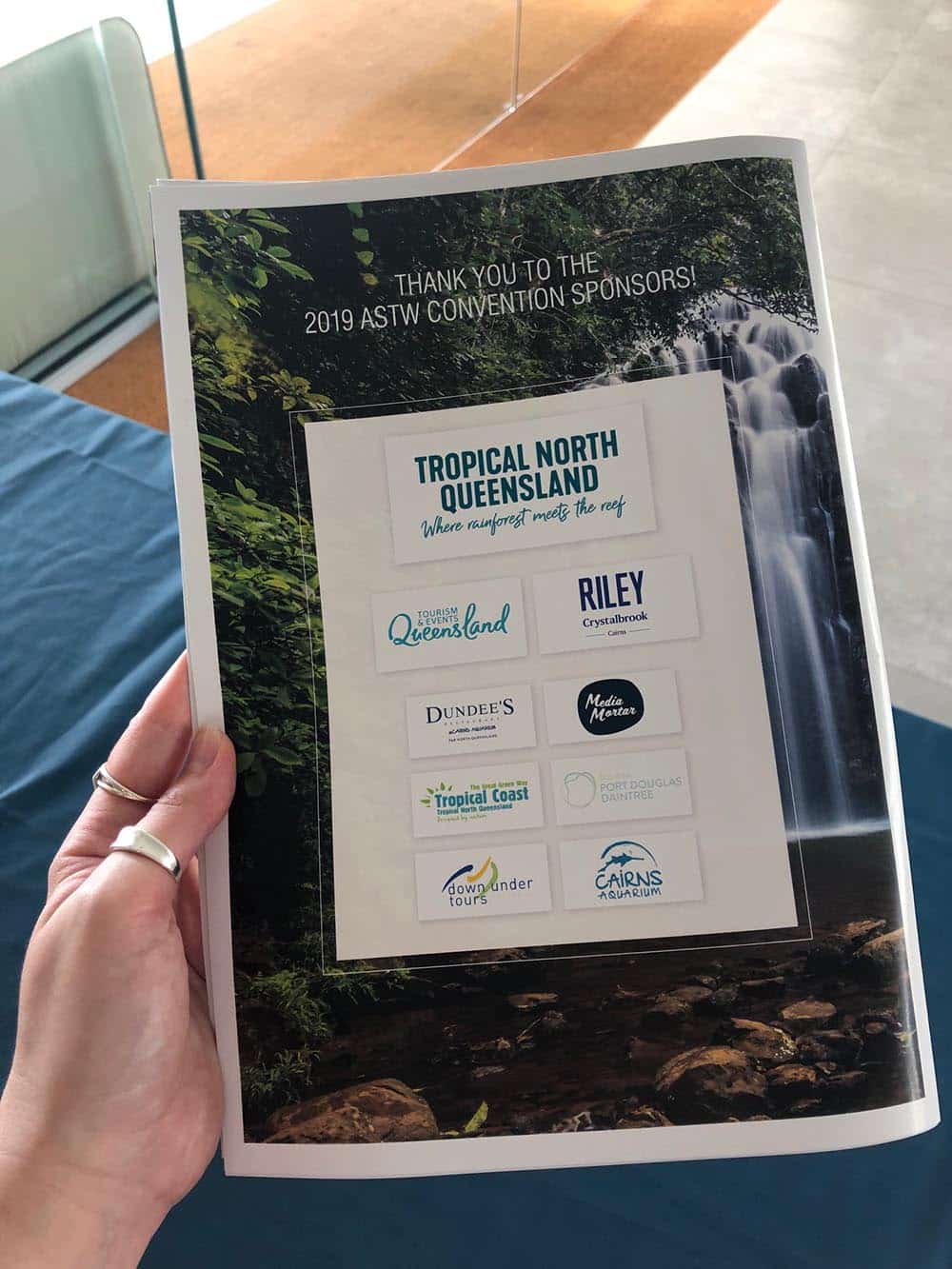
Look Ma, we sponsored an event!
If you’ve read this post of ours, you’ll know we are living in a world of storytelling and creating captivating content to engage with customers – and the first panel at the conference hit it home.
With consumer attention spans getting shorter and shorter, the topic for discussion was how do we create content that makes a strong connection with consumers?
Tourism Australia, Destination Canada, Tourism New Zealand and G Adventures led with insights, with a key theme that emotional connection is marketing’s secret sauce.
Our note pads were full with the following tips:
- Make an impact – use humour and emotion to tell your story
- Stay on message and stick to your brand values
- Gritty is the new pretty – consider a switch to using unbranded content rather than over-polished TVCs
- If your story is shit, no one will care
- If you don’t have the big budgets, get creative – try crowd sourcing sites like Genero to find someone who will work for your budget
- Create content for the long-term that can be integrated across multiple platforms – EDMs, social media etc
5. Even the most seasoned of travellers will experience travel disasters
It’s not every day you get to listen to travel writing royalty. The keynote speaker, Tony Wheeler the creator of Lonely Planet, undoubtably wears the crown in the travel writing community.
Considering Tony has more passport stamps than most, having travelled professionally for most of his life, he shared some insights on his favourite and not so favourite experiences.
Across the hour his travel tales proved that even the most seasoned of travellers have travel disasters along the road.
Hot tip: he said he wouldn’t bother with the Maldives. Good news for the rest of us who couldn’t afford it anyway!
6. With great social media power, comes great social media responsibility
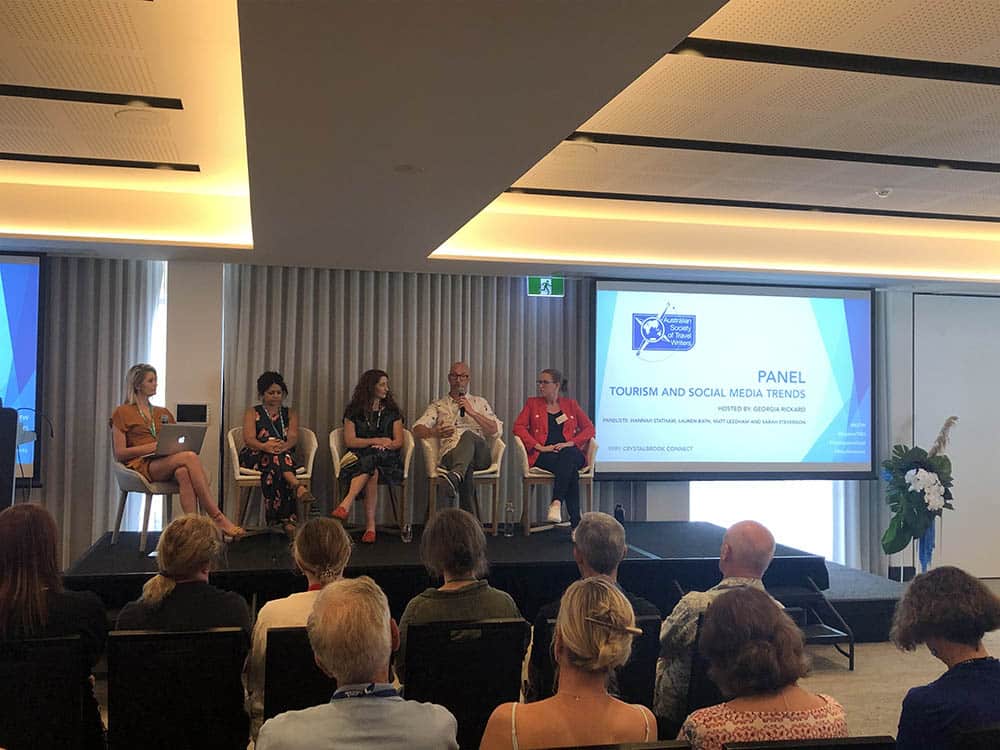
Spotto BossHan on the Tourism and Social Media Trends panel
It was fitting that the topic of responsible travel was a focus of the social media panel given the conference’s location at Riley who are leading the way with what they call #responsibleluxury.
MM’s own #BossHan was a panellist and championed along with the other speakers that social media influencers and social media account managers have a part to play in over-tourism and representing safe behaviour.
According to BossHan “it’s about always promoting safe practice and following a leave only footsteps philosophy”.
“Often times we come unstuck because we aren’t familiar with the region and that an influencer has crossed a barrier to take the photo. As social media experts, it’s our job to remove such pictures and only promote the consumer experience.”
“The days of doing it for the ‘gram are over.”
7. Travel is an opportunity to learn new experiences and meet wonderful people

Magic hour on the Cairns Esplanade
While we walked away with new knowledge from the conference, what we really walked away from the ASTW convention with was new friends.
The ASTW convention proved what we know and love about the travel community. It brings people together and welcomes newbies with open arms.
The tourism industry might be a small community, but it has a big heart, and life-long friendships to be made. We think that in itself is worth celebrating.
Here’s cheers to the 2019 ASTW convention in Cairns and a warm hello to the 2020 convention taking place in the Whitsundays. See you there?

By Kristy de Git
If they were handing out PHDs for organisation, Kristy would be first in line to collect the scroll. She’s master of a to do list, which is why she’s aptly in charge of content at Media Mortar.
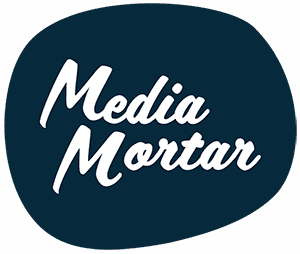

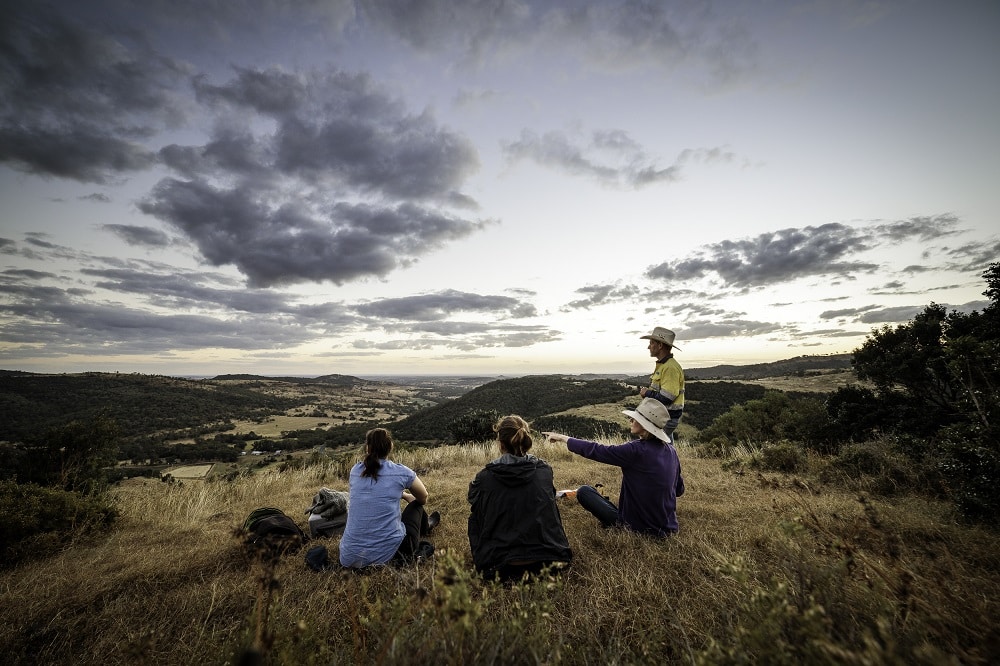 We get a good chuckle when marketers tout storytelling as a new marketing trend. It’s probably the oldest marketing trick in the book. In fact, humans have been telling stories for more than 40,000 years.
We get a good chuckle when marketers tout storytelling as a new marketing trend. It’s probably the oldest marketing trick in the book. In fact, humans have been telling stories for more than 40,000 years.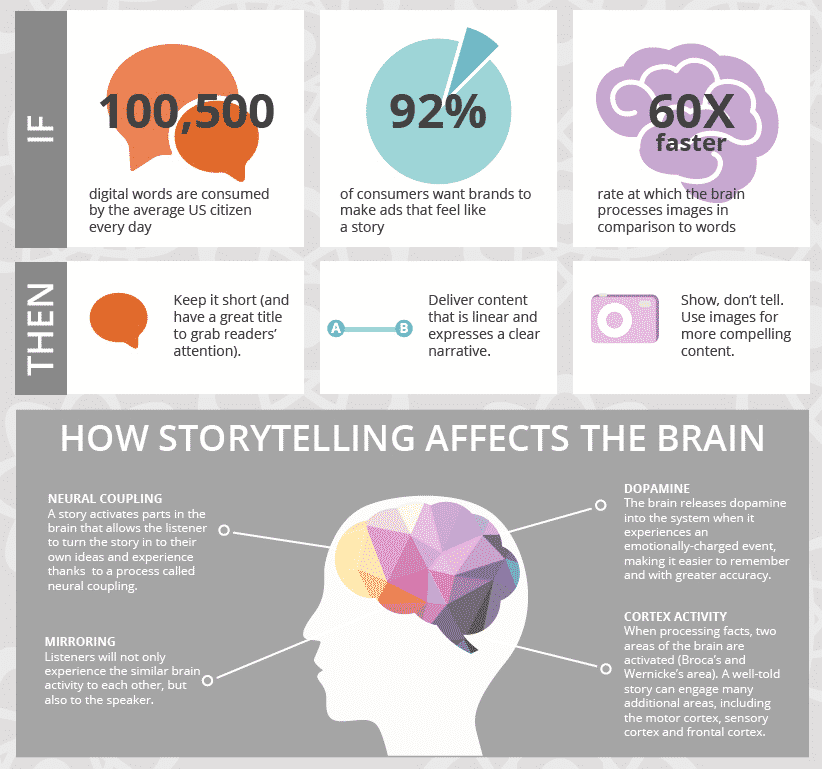
 It’s critical that we create emotional experience for our customers in order to create conversion.
It’s critical that we create emotional experience for our customers in order to create conversion. In our view, good storytelling only needs to achieve two things:
In our view, good storytelling only needs to achieve two things: At Content Marketing World (an international event that draws content marketers from all over the world) – Content Marketing Institute Joe Pulizzi, argued storytelling has one threat – lack of understanding.
At Content Marketing World (an international event that draws content marketers from all over the world) – Content Marketing Institute Joe Pulizzi, argued storytelling has one threat – lack of understanding.

 When we talk about publicity, it’s so much more than just coverage in a newspaper, magazine or TV show (although that would be nice).
When we talk about publicity, it’s so much more than just coverage in a newspaper, magazine or TV show (although that would be nice). The good news (for small business owners at least) is that publicity is generally the cheapest form of consumer marketing. You won’t need Facebook dollars or lucrative newspaper placements to win the PR-game – just man-hours and generally, lots of them.
The good news (for small business owners at least) is that publicity is generally the cheapest form of consumer marketing. You won’t need Facebook dollars or lucrative newspaper placements to win the PR-game – just man-hours and generally, lots of them. Sending your cute local story to a national newspaper is a sure-fire way to waste your own time. Don’t do that. Your time is too precious to be shooting blank pitches.
Sending your cute local story to a national newspaper is a sure-fire way to waste your own time. Don’t do that. Your time is too precious to be shooting blank pitches. In regional Australia, some papers only print weekly, so missing the deadline by as much as a day could mean your news is no longer newsworthy by the time of the next publication.
In regional Australia, some papers only print weekly, so missing the deadline by as much as a day could mean your news is no longer newsworthy by the time of the next publication. In researching publications, get to know their reporters and what they will write about. In bigger publications the journalists who write about property, won’t be the ones writing about education. Knowing who’s who in the zoo is as easy as reading and watching your desired publication before reaching out to them.
In researching publications, get to know their reporters and what they will write about. In bigger publications the journalists who write about property, won’t be the ones writing about education. Knowing who’s who in the zoo is as easy as reading and watching your desired publication before reaching out to them. It’s time to get sharp about your angle, which is going to involve some business / brand navel gazing.
It’s time to get sharp about your angle, which is going to involve some business / brand navel gazing.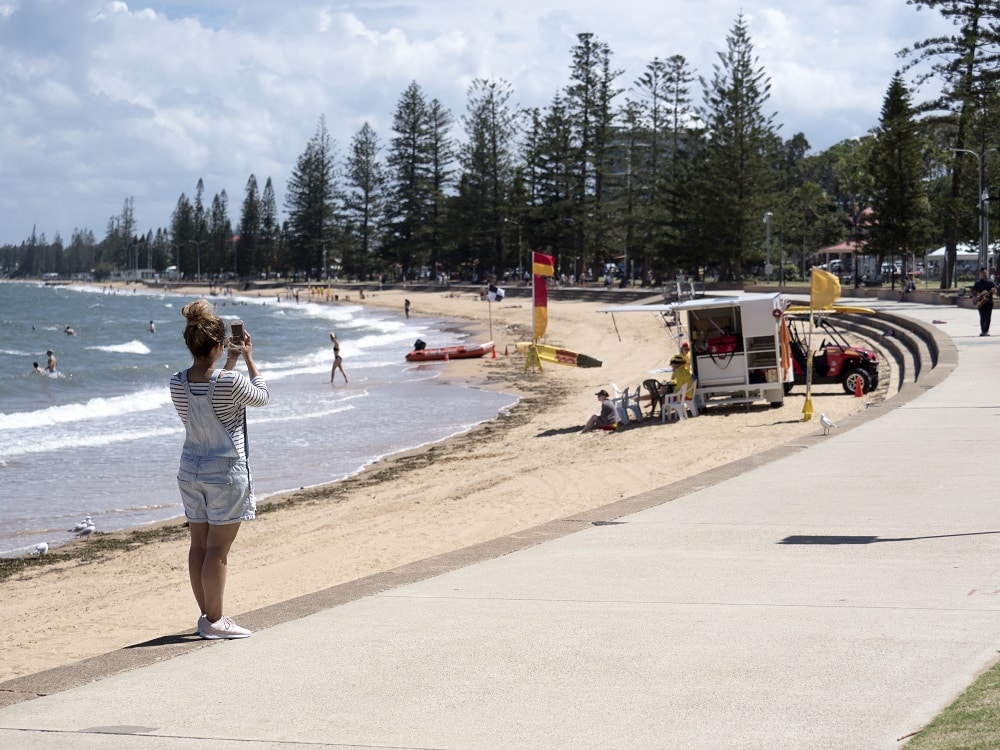 With an audience in mind and an angle up your sleeve, you’re ready to create a pitch.
With an audience in mind and an angle up your sleeve, you’re ready to create a pitch.
 You’ve sent your pitch out to the world, and you’ve been return served with silence. Ahhh, the joys of PR.
You’ve sent your pitch out to the world, and you’ve been return served with silence. Ahhh, the joys of PR.
 There’s plenty of reasons we know reviews work, but they all boil down to the social proof and endorsement that your product is one worth investing in.
There’s plenty of reasons we know reviews work, but they all boil down to the social proof and endorsement that your product is one worth investing in. While offering a free service in return for a five-star review is probably going to have Aus Trade cracking down with a bribery claim, there’s nothing wrong with a little incentive to get the ball rolling on the review-front.
While offering a free service in return for a five-star review is probably going to have Aus Trade cracking down with a bribery claim, there’s nothing wrong with a little incentive to get the ball rolling on the review-front.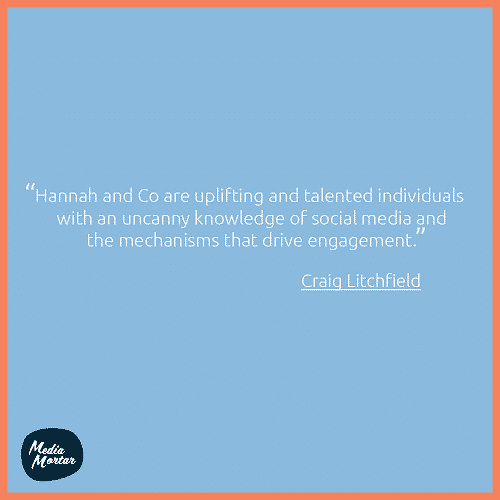

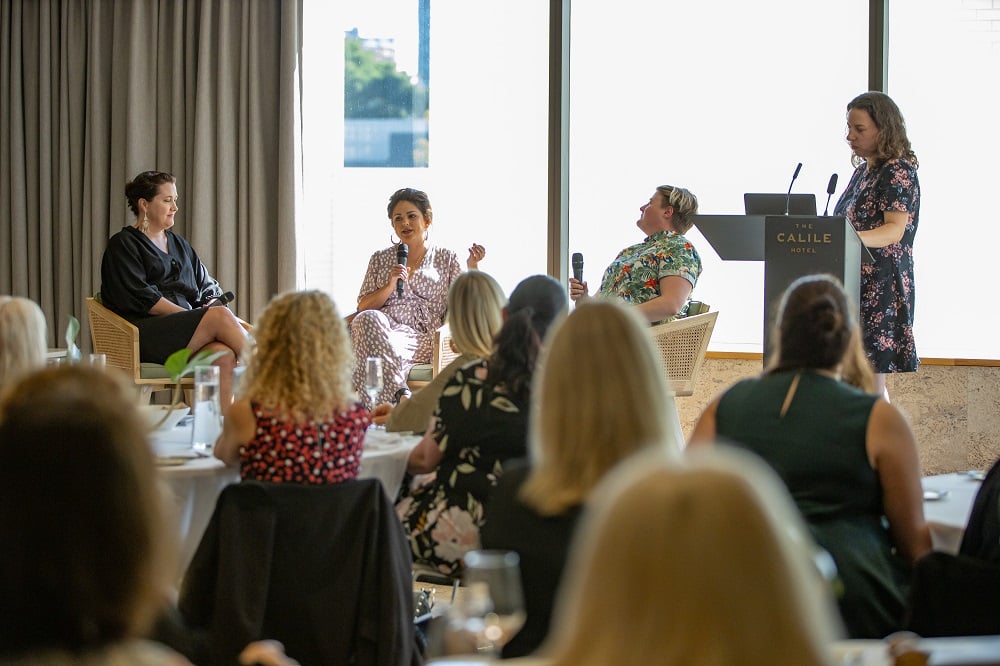 And it’s the thought of never changing at all. If you keep in the back of your mind that change is a chance to grow, develop and improve, you’ll never look at change in the same way again.
And it’s the thought of never changing at all. If you keep in the back of your mind that change is a chance to grow, develop and improve, you’ll never look at change in the same way again.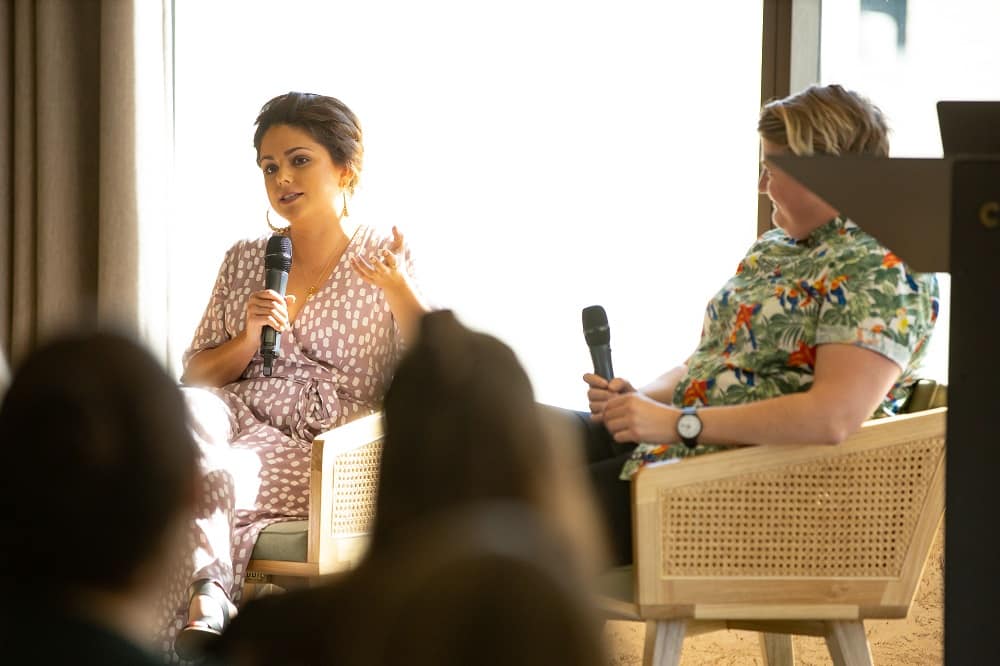 I encourage you to let change de-rail plans, but whatever you do, don’t let change de-rail your business vision. Your vision is your roadmap for the future – and while you can detour your path to get there, you always need to ensure your business GPS is still coded with a destination.
I encourage you to let change de-rail plans, but whatever you do, don’t let change de-rail your business vision. Your vision is your roadmap for the future – and while you can detour your path to get there, you always need to ensure your business GPS is still coded with a destination.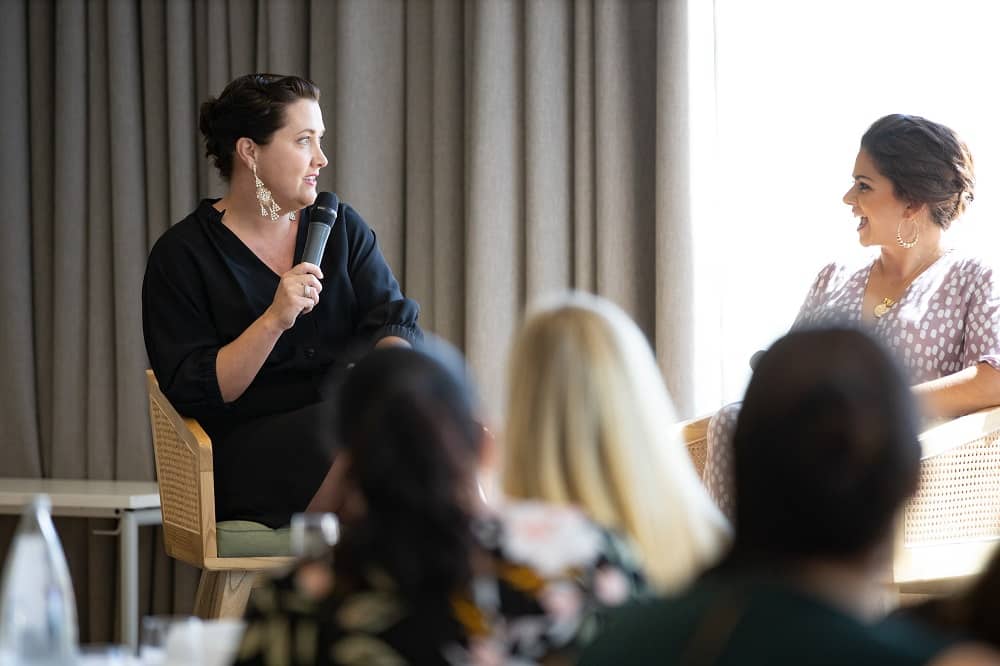 It’s a given not everyone loves change – so prepare for that. Build teams that are stacked with a mixture of personalities, each with a different appetite for change. You don’t want an entire team who run towards change constantly, but equally you don’t want one that shies from it either.
It’s a given not everyone loves change – so prepare for that. Build teams that are stacked with a mixture of personalities, each with a different appetite for change. You don’t want an entire team who run towards change constantly, but equally you don’t want one that shies from it either. Instagram is full of quotes that promote the benefits of change: “if it doesn’t challenge you, it doesn’t change you” which are probably more suited to a personal training studio than the office.
Instagram is full of quotes that promote the benefits of change: “if it doesn’t challenge you, it doesn’t change you” which are probably more suited to a personal training studio than the office.
 It all begins with a marketing plan. Your marketing plan doesn’t need to be a tome, filled with pie graphs and Gantt charts. Hell no.
It all begins with a marketing plan. Your marketing plan doesn’t need to be a tome, filled with pie graphs and Gantt charts. Hell no. With targets set on your audiences back (step 1 and 2) and your marketing weapons in your hands (step 3 and 4), you’re ready to plan and launch your online strategy with bullseye accuracy.
With targets set on your audiences back (step 1 and 2) and your marketing weapons in your hands (step 3 and 4), you’re ready to plan and launch your online strategy with bullseye accuracy.

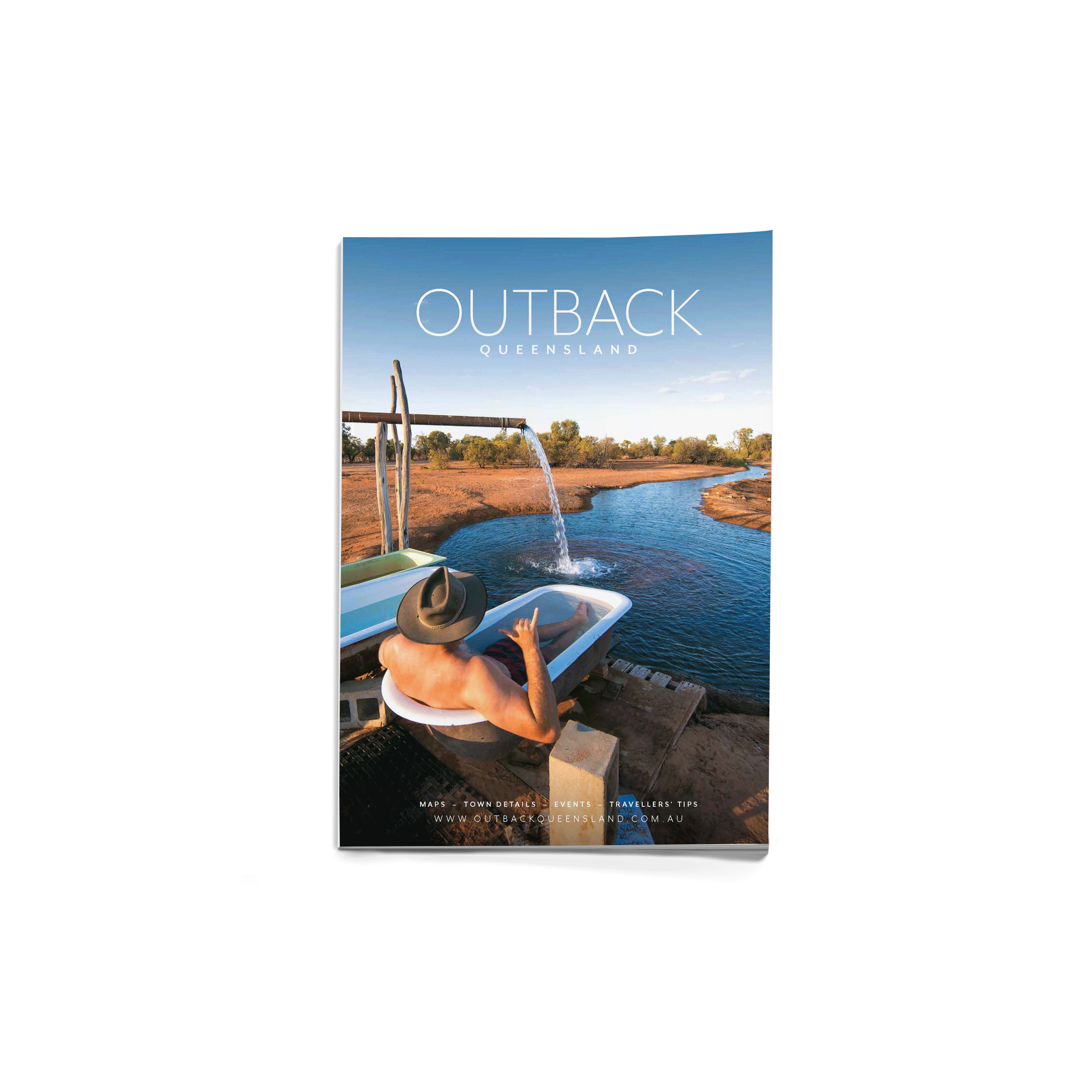








Recent Comments